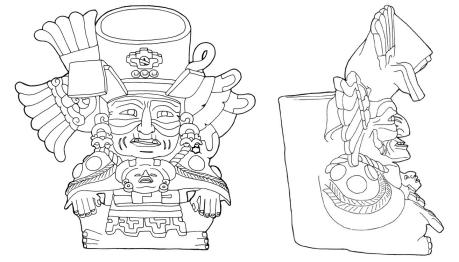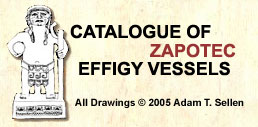| Key: NMAI 163627 | | Actual Location: National Museum of the American Indian, Smithsonian Institution, Washington D.C., United States. | | Collection: Louis Gustave Bellon; George Gustave Heye. Heye purchased this artefact at auction in Paris in 1928. | | Registration: Col. Bellon no. 34; Old number from MAI 16/3627; New number from NMAI 163627.000 | | Provenance: Cuilapan, Oaxaca | | Measurements: 42 x 45 cm. | | Color: Light brown clay. | | Chronology: Peche 500 - 600 AD | | Click to view Chronology | | Reference: AMNH, Saville Archive, box 28, Bellon collection inventory; Arts of Pre-Columbian Mexico (auction, November 1928) fig. 22; Bernal, Exploraciones de Cuilapan, 1902-1954, p. 67; Boos 1966b: 297, fig. 276 ; Sleight 1988: fig. 24. | | Comments: This piece often appears published without provenance, however the original collector, Gustave Bellon, reported that it was from Cuilapan. A jaguar's head on the left side of the headdress and a plaited cord, on the right side. For a similar piece, but without a glyph, refer to SOTH 1987.156. | | Glyphs: Three numerals and glyph J in the headdress (3 J). | |
| | 
Click to view high resolution in a new window
select this image for review |
